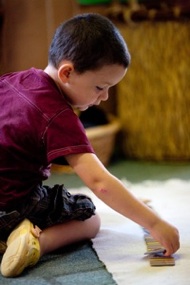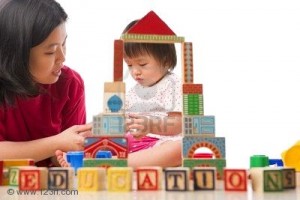When our daughter started to crawl we did what most parents do, we dashed around the house “baby proofing” everything in sight. We moved dangerous things up or to cabinets that could be locked or secured. I installed latches on cabinets containing cleaning products. But as I looked around our home and imagined putting latches on every cabinet and drawer in the house, I got overwhelmed.
And then it hit me; maybe I didn’t actually have to install all those latches! Of course, I realize that I might need to add a few as my daughter grows and gets into things more, but I came up with a solution that is working well and has caused the least work for everyone. I gave my daughter her very own drawer.





